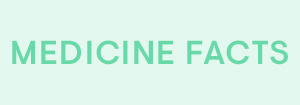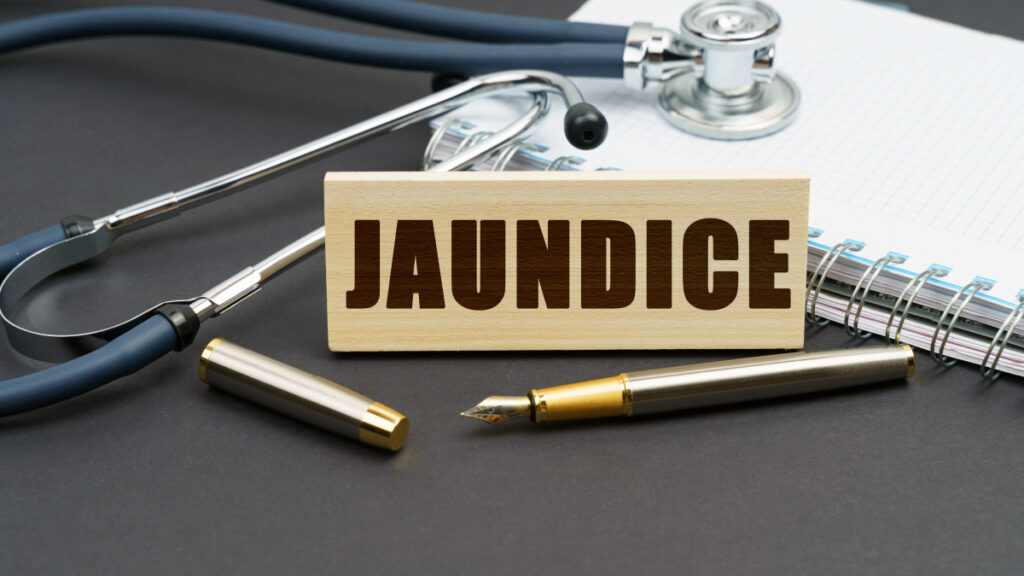OVERVIEW
Jaundice is a clinical condition characterized by the yellowing of the skin, mucous membranes, and sclera. It is also called icterus. The yellow colouration is due to the accumulation of bilirubin in the blood. Bilirubin is a yellow-orange pigment from bile. When bilirubin levels increase, it is deposited on the skin, mucous membranes, and sclera, hence the yellow colouration.
Jaundice usually indicates an underlying impaired liver function. It could also be due to problems with the bile duct. When there is a liver or bile duct problem, bilirubin cannot be excreted. It gets deposited on the skin and other areas, causing the characteristic yellow colour.
NEWBORN JAUNDICE (NEONATAL JAUNDICE)
Newborn jaundice, also called newborn icterus, is the yellow colouration of the eyes and skin of newborns. It is a very common condition because the liver of newborns is still developing and cannot clear bilirubin completely.
Newborn jaundice can either be physiological or pathological. The physiological type usually disappears within two to three weeks, whereas the pathological type persists, signalling the presence of an underlying condition. High bilirubin levels can put newborns at risk for kernicterus and other cerebral damage if left unchecked.
Kernicterus is a type of brain damage resulting from increased bilirubin levels in the blood of newborns. Some of this bilirubin crosses the blood-brain barrier and damages the brain, causing cerebral palsy, deafness, or problems with vision and teeth.
Kernicterus should not be mistaken for icterus. While kernicterus is a condition of brain damage, icterus is another name for jaundice.
Common causes of newborn jaundice include:
- Premature birth (before 37 weeks)
- Newborns who lack adequate breast milk or formula
- Bruising at birth or internal bleeding
- Infection
- Enzyme deficiency, particularly G6PD (Glucose-6- phosphate-dehydrogenase) deficiency.
Mild newborn jaundice clears after 2-3 weeks without treatment. For moderate or severe cases, treatment will be needed.
Phototherapy (light therapy) is the most common and effective treatment method.
Enhanced nutrition and IV fluid replacement are supportive mechanisms.
KEY POINTS
- Jaundice is not a disease but a clinical sign pointing to an underlying condition.
- Jaundice can affect people of all ages. Newborns and older adults are most likely to develop the condition.
- When jaundice affects newborns, it is called newborn jaundice or neonatal jaundice. Neonatal jaundice can either be physiological or pathological. Jaundice in adults is called adult jaundice.
- Jaundice can be classified into three types based on the location of the underlying condition. It could be prehepatic jaundice, hepatic jaundice, or posthepatic jaundice.
- Some symptoms include yellow skin, mucous membranes or sclera, pale stool, dark urine, itching, and flu-like symptoms (fever and chills). A doctor should be seen upon the development of symptoms.
- Tests like bilirubin tests, complete blood count, urinalysis, imaging tests and tests for viral infections help diagnose jaundice and any underlying condition.
- The mainstay treatment of jaundice is to treat any underlying condition.
SYMPTOMS
Symptoms of jaundice depend on the severity of the underlying condition. It varies from mild to severe. Typical symptoms of jaundice include:
- Yellow hue to the skin, mucous membranes and sclera
- Pale stool
- Dark urine (bilirubinuria)
- Itching
Other associated symptoms include:
- Abdominal pain
- Fever and chills
- Weight loss
- Vomiting
DIAGNOSIS
The yellow colour of the skin, mucous membranes and sclera are characteristic of jaundice. In blacks, the yellow colour may not be seen on the skin. In such cases, the white of the eye (sclera) is the ideal spot to inspect.
The doctor takes an appropriate history of the patient and then proceeds to perform a physical examination.
In physical examination, more focus is on the skin, liver and abdomen. Some signs of liver disease help in the diagnosis—the doctor checks for liver tenderness through abdominal palpation.
In as much as jaundice can be easily elicited by the physician, there is a need to identify the underlying cause, hence the need for further tests. These tests include:
Bilirubin tests: It is also called total serum. The bilirubin test measures the amount of bilirubin in the blood. Normal bilirubin levels in the blood are below 1.0mg/dl. Levels above 2.0 – 3.0mg/dl indicate jaundice.
Urinalysis (Urine analysis): To assess the level of bilirubin in the urine.
Blood tests: Complete blood count is carried out to ascertain the number of red blood cells, white blood cells and platelets.
Hepatitis test for hepatitis A, B and C: When positive, it indicates viral liver infection.
Imaging tests: M.R.I., CT scans and ultrasound scans are carried out in suspected cases of biliary obstruction.
Liver biopsy
CAUSES
Deposition of accumulated bilirubin on the skin, mucous membranes and sclera lead to the yellow hue observed in jaundice. This accumulation occurs when there is a problem with bilirubin excretion.
The breakdown of red blood cells ultimately leads to increased bilirubin levels in the blood, as observed in jaundice. This bilirubin is called unconjugated bilirubin. This unconjugated form later undergoes a conjugation reaction by the liver to form conjugated bilirubin. If the liver cannot conjugate bilirubin, it accumulates in the blood, causing hyperbilirubinemia (increased blood bilirubin levels).
After conjugation, the conjugated bilirubin is excreted as bile. If there’s an obstruction in the bile flow, jaundice can occur.
The causes of jaundice can be grouped into three based on the types of jaundice.
Pre-hepatic jaundice: This type of jaundice occurs before the conjugation of bilirubin, leading to increased levels of unconjugated bilirubin in the blood. Some causes of increased bilirubin levels in this type are:
- Hemolytic anaemias (excessive premature destruction of red blood cells)
- Reabsorption of large hematomas (blood accumulation under the skin)
- Gilbert’s syndrome.
Hepatic jaundice: It is also called hepatocellular jaundice. It occurs during bilirubin conjugation due to dysfunction of the liver cells. Both conjugated and unconjugated bilirubin can be found in the blood. Some causes include:
- Alcoholism
- Iatrogenic, e.g. medication
- Viral hepatitis (Hepatitis A, B, C)
- Hepatocellular carcinoma (cancer of the liver)
- Autoimmune diseases
- Liver cirrhosis
Post-hepatic jaundice: This type of jaundice occurs after the conjugation of bilirubin. It is usually due to an obstruction in the bile duct resulting in increased levels of conjugated bilirubin in the blood. Some causes of bilirubin accumulation in this type include:
- Gallstones
- Gall bladder cancer
- Inflammation of the gallbladder
- Pancreatic tumour
- Abdominal masses
PREVENTION
Jaundice arises as a result of several factors. This makes its preventive measures non-specific. A healthy lifestyle is a major preventive measure for jaundice. Since the liver plays a key role in eliminating bilirubin, it is essential that one takes care of the liver by living healthily. Some of the necessary lifestyle habits include:
- Eating a balanced diet
- Avoid or reduce alcohol intake
- Exercise regularly
- Avoid any medication unless prescribed by a healthcare professional
- Avoid smoking and the use of intravenous drugs.
- Practising safe sex to prevent hepatitis or any other infection
TYPICAL TREATMENTS
The mainstay treatment for jaundice is to tackle the underlying condition. For instance, in the case of bile duct obstruction, a surgical procedure will be carried out to remove the obstruction, allowing proper flow of bile.
Other medications can be prescribed to deal with some symptoms, like itching. Antihistamines or
the physician may prescribe cholestyramine to reduce itching.
A liver transplant can be carried out in the case of liver damage.
CONCLUSION
Jaundice is a condition where the skin, mucous membranes and sclera become yellow due to excessive bilirubin in the blood. The liver aids in the excretion of bilirubin. This means that impairment of liver function will lead to bilirubin accumulation.
Jaundice can affect newborns and adults. When it affects newborns, it is called newborn jaundice; when it affects adults, it is called adult jaundice.
Yellowing of the skin, mucous membranes and sclera is a classical presentation of jaundice. The treatment is to address any underlying condition.
MOST COMMON







